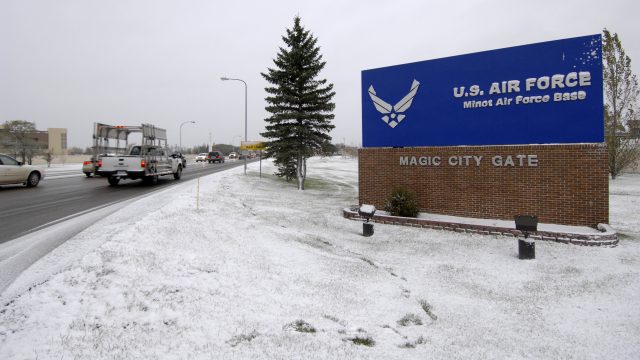ISIS Computer Hackers Call For Attacks On North Dakota Based Military

UPDATE: For those of you asking, I do have a copy of the list. I am not sharing it publicly for obvious reasons. There are a number of Minot residents on the list. None from the Grand Forks base. I have forwarded it to state authorities.
The risk of waging an asymmetrical “global war on terror” in the digital age is that it truly is global. The battlefield can be anywhere. Even in the middle of the American continent:
Middle East terrorist organization Islamic State (ISIS) has called on its followers take the fight to 100 members of the United States military residing in the US. A group calling itself the “Islamic State Hacking Division” has posted names, addresses, and photographs of soldiers, sailors, and airmen online, asking its “brothers residing in America” to murder them, according to Reuters.
Although the posting purports to come from the “Hacking Division,” US Department of Defense officials say that none of their systems appear to have been breached by the group. Instead, the personal data was almost certainly culled from publicly available sources, a DoD official told the New York wTimes on the condition of anonymity.
Those appearing on the list include crew members from the 2d Bomb Wing at Barksdale Air Force Base in Louisiana and the 5th Bomb Wing at Minot AFB in North Dakota, even though they have played no part in the US air campaign against ISIS. Other military members doxed have either been identified in media reports on the campaign or were cited by name in official DoD reports, officials told the Times.
An SAB reader told me he was able to find the target list put out by the extremist on Twitter, and that it had a “lot of Minot guys” on it. He said it included their off-base residential addresses, complete with photos of the servicemembers and their homes.
He also said that the people he saw were officers.
Which, as a citizen of Minot, is a chilling thing to learn. I can’t even imagine how those named are feeling.
The thing is, as the article mentions, between online sources like Twitter and Facebook and Instagram it doesn’t take a lot of sophistication to put together a lot of information about people very quickly just from what they’ve voluntarily shared online.




